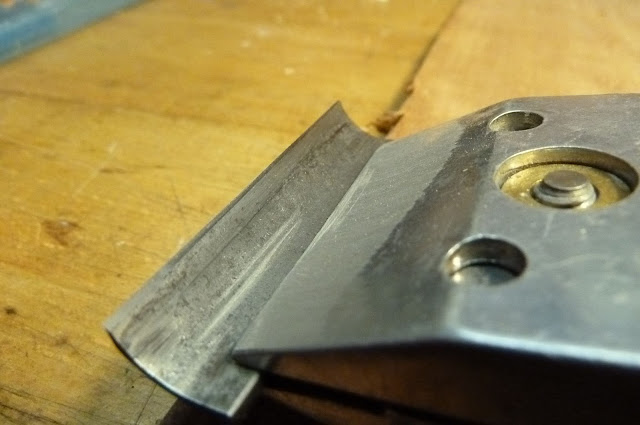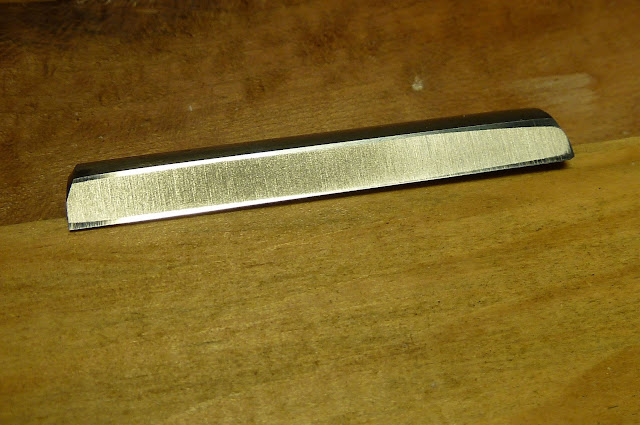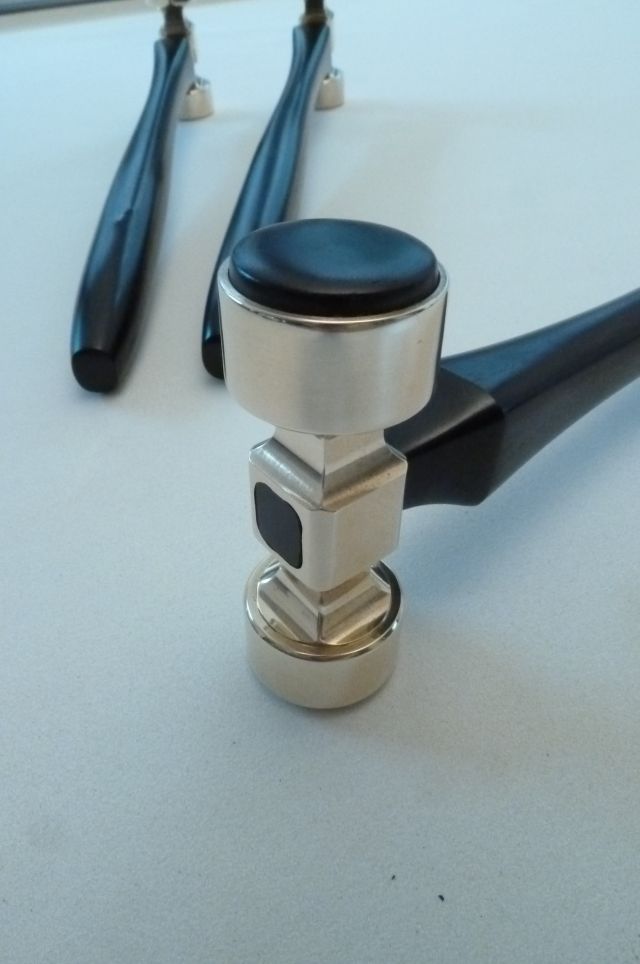Quote from: Ken S on February 15, 2017, 12:47:17 PM
I have compared freshly ground chisels from the T4 and T7. I find it difficult to see a difference by eye. I can see that each is hollow ground, however, the amount of hollowing seems miniscule.
Ken,
Jan shows above with his excellent sketch, that the influence of the hollow isn't that miniscule. The difference between the ground angle and the one at the blade tip is about 5 degrees. I don't want to have this kind of deviation. My bench chisels work very well with 30 degrees, with 25 the edge durability will be bad. I've tested it.
You're completely right, that there are many different types of chisels and blade materials. My bench chisels for general purpose work best at 30 deg., the paring chisels are working good with 25 deg. and the mortise chisels want to have 35 deg. at least. But that's not the point to my eyes. Regardless the angle you want to have on the chisel you are grinding, you want to have it as exactly as possible. 5 deg. more or less won't do it.
Klaus


 . This is able to clamp the circular blade in a way that the bevelling could be done. The next step was pretty clear. I had to use the flat side of the Tormek stone to install the inside bevel. Wow, that went really good.
. This is able to clamp the circular blade in a way that the bevelling could be done. The next step was pretty clear. I had to use the flat side of the Tormek stone to install the inside bevel. Wow, that went really good.






 But it still has a lot of rest life.
But it still has a lot of rest life. 15° is exactly what the angle finder on the WM-200 is telling as well. Pretty clear that this angle never will work. The problem is, that the face can't be ground smaller. Currently it has 6 mm. Less won't work since the back of the face then would be deeper than the cutting edge once the blade is inserted. Here a pic that shall show it though the quality isn't the best.
15° is exactly what the angle finder on the WM-200 is telling as well. Pretty clear that this angle never will work. The problem is, that the face can't be ground smaller. Currently it has 6 mm. Less won't work since the back of the face then would be deeper than the cutting edge once the blade is inserted. Here a pic that shall show it though the quality isn't the best.











